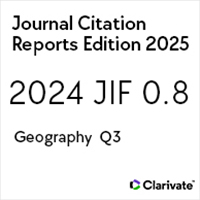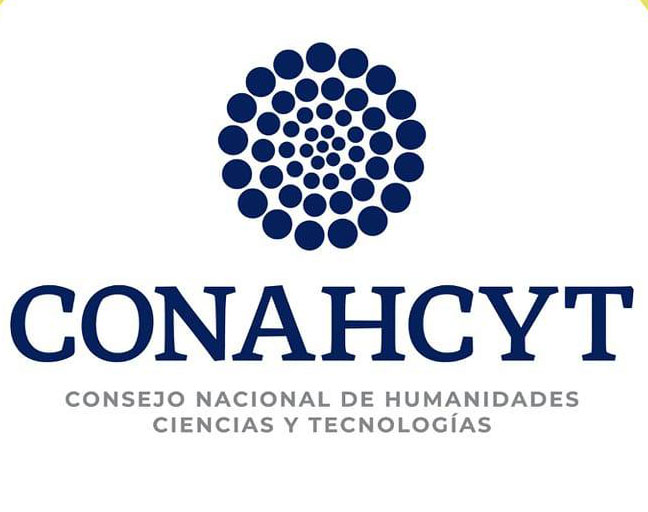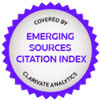European Union regional policy in Asia-Europe’s meeting
La política interregional de la Unión Europea en el encuentro Asia-Europa (ASEM)
https://doi.org/10.21670/ref.2008.17.a01
Keywords:
nterregionalism, ASEM, interregional triad, European Comission, constructivismAbstract
During 1996 the Asia-Europe Meeting (ASEM) was created with the purpose of constituting a mechanism of nonexistent interregional dialogue until that moment and that united the both extremes of the eurasian territorial mass: East Asia (represented by group ANSEA 3) and Europe (represented by the European Union). The expectations erected at the moment of ASEM's creation were many, but with the years it has demonstrated a set of limits that has diminished its effectiveness, at least in the area of the political dialogue. In this paper is described the particular experience of the diplomacy of the European Union in the mechanism of the ASEM, the kind of interregional policy that this one has implemented and the contradictions that it has had to tolerate with respect to his own legal and institutional exigencies. In the paper it is argued that, despite its limits, the ASEM can be a referential case on the reaction of the European Union forehead to the transformation that in historical terms means the political and economic emergency of Asia in the international system.Resumen
En 1996 fue creado el Encuentro Asia-Europa (ASEM) con el fin de constituir un mecanismo de diálogo interregional inexistente hasta ese momento y que uniera a los dos extremos de la masa territorial euroasiática: Asia del Este (representada por el grupo ANSEA 3) y Europa (representada por la Unión Europea). En el momento de su creación fueron muchas las expectativas, pero con los años ha evidenciado un conjunto de limitantes que lo han vuelto inefectivo, al menos en el campo del diálogo político. En este trabajo se describe la particular experiencia de la diplomacia de la Unión Europea en el mecanismo del ASEM, el tipo de política interregional que ésta ha implementado y las contradicciones que ha tenido que tolerar frente a sus propias exigencias legales e institucionales. En el trabajo se argumenta que, no obstante sus limitantes, el ASEM puede ser un caso referencial sobre la reacción de la Unión Europea frente a la transformación que en términos históricos representa la emergencia política y económica de Asia en el sistema internacional.References
Abad Quintanal, Gracia (2007), “ASEM VI: La renovación del proceso”, UNISCI Discussion Papers núm. 13, Madrid, Universidad Complutense de Madrid.
Aggarwal, Vinod K. y Min Gyo Koo (2005), “The Evolution of APEC and ASEM: Implications Of New East Asian Bilateralism”,
European Journal of East Asian Studies, vol. 4, núm. 2. Alecu de Flers, Nicole y Elfriede Regelsberger (2005), “The EU and
Inter-regional Cooperation”, en Christopher Hill y Michael Smith (eds.), International Relations and the European Union, Oxford, Oxford University Press.
Ambos, Alicia (2006), “The Institutionalization of CFSP and ESDP”, en Dieter Mahncke et al. (eds.), European Foreign Policy. From Rethoric to Reality, Bruselas, PIE, Peter Lang.
Bobrow, Davis B. (1999), “The US and ASEM: Why the Hegemnon didn´t Bark”, The Pacific Review, vol. 12, núm. 1. DOI: https://doi.org/10.1080/09512749908719280
Chen, Zhimin (2005), “NATO, APEC and ASEM: Triadic Interregionalism and Global Order”, Asia Europe Journal, núm. 3. DOI: https://doi.org/10.1007/s10308-005-0005-7
Comisión Europea (2001), La Gobernanza Europea. Un Libro Blanco, Bruselas, COM.
Dent, Christopher (2004), “The Asia-Europe Meeting and Interregionalism. Toward a Theory of Multilateral Utility”, Asian DOI: https://doi.org/10.1525/as.2004.44.2.213
Survey, vol. 44, núm. 2.
Drake, Michael S. (2003), “Representing ‘Old Countries’: The Strategic Representation of Culture as Heritage in the Asia-Europe Summit Meetings”, en Stephanie Lawson (ed.), Europe and the Asia Pacific. Culture, Identity and Representations of Region, Londres, Routledge Courzon.
European Background Study (2006), ASEM in its Ten Year Looking Back, Looking Forward. An Evaluation of ASEM in its First Decade and an Exploration to its Future Possibilities, Helsinki, University of Helsinki, Network for European Studies.
Forster, Anthony (1999), “Evaluating the EU-ASEM Relationship: A Negotiated Order Approach”, Journal of European Public Policy, vol. 5, núm. 5. DOI: https://doi.org/10.1080/13501760010014957
Gilson, Julie (2005), “New Interregionalism? The EU and East Asia”, Journal of European Integration, vol. 27, núm. 3. DOI: https://doi.org/10.1080/07036330500190164
Govaere, Inge (2006), “The External Relations of EU. Legal Aspects” en Dieter Mahncke et al. (eds.), European Foreign Policy. From Rethoric to reality?, Bruselas, PIE, Peter Lang.
Hänggi, Heiner (2000), “Interregionalism: Empirical and Theoretical Perspectives”. Conferencia presentada en el taller “Dollars, Democracy and Trade: External Influence on Economic Integration in the Americas”, The Pacific Council on International Relations, Los Ángeles, 18 de mayo. Disponible en http://www.cap.lmu.de/transatlantic/download/Haenggi.PDF
Hänggi, Heiner, Ralf Roloff y Jürgen Rüland (2005), “Interregionalism: A New Phenomenom in International Relations”, en Heiner Hänggi (ed.), Interregionalism and International Relations. A Stepping Stone to Global Governance?, Londres, Routledge.
Hettne, Björn y Frederick Soderbaum (2005), “Civilian Power or Soft Imperialism? The EU as a Global Actor and the Role of DOI: https://doi.org/10.54648/EERR2005036
Interregionalism”, European Foreign Affairs Review, vol. 10.
Loewen, Howard (2007), “East Asia and Europe-Partners in Global Politics?”, Asia Europe Journal, vol. 5, núm 1. DOI: https://doi.org/10.1007/s10308-006-0103-1
Miller, John (2004), “The Roots and Implications of East Asian Regionalism”, Ocassional Paper, Honolulu, Asia-Pacific Center for Security Studies. DOI: https://doi.org/10.21236/ADA446098
Oudjani, Radhia (2006), “EU-Asia Relations”, en Dieter Mahncke et al. (eds.), European Foreign Policy. From Rethoric to reality?, Bruselas, PIE, Peter Lang.
Reiterer, Michael (2006), “Interregionalism as a New Diplomatic Tool: The EU and East Asia”, European Foreign Affairs Review, vol.11. DOI: https://doi.org/10.54648/EERR2006018
Richards, Gareth y Colin Kirkpatrick (1999), “Reorienting Interregional Cooperation in the Global Political Economy: Europe’s East Asian Policy”, Journal of Common Market Studies, vol. 37, núm. 4. DOI: https://doi.org/10.1111/1468-5965.00202
Rüland, Jürgen (2006), “Interregionalism and the Crisis of Multilateralism: How to Keep the Asia-Europe Meeting (ASEM) DOI: https://doi.org/10.54648/EERR2006003
Relevant”, European Foreign Affairs Review, vol. 11.
Schünemann, Julia (2006), “Cooperación interregional e interregionalismo: Una aproximación socialconstructivista”, Documentos de Política núm. 5, Madrid, Universidad Complutense de Madrid. Disponible en http://www.ucm.es/info/icei/pdf/WP%2005-06.pdf
Song, Weiqing (2007), “Regionalisation, Inter-regional Cooperation and Global Governance”, Asia Europe Journal, vol. 5, núm. 1. DOI: https://doi.org/10.1007/s10308-006-0094-y
Yeo, Lay Hwee (2003), Asia and Europe. The Development and DifferentDimensions of ASEM, Londres, Routledge.































